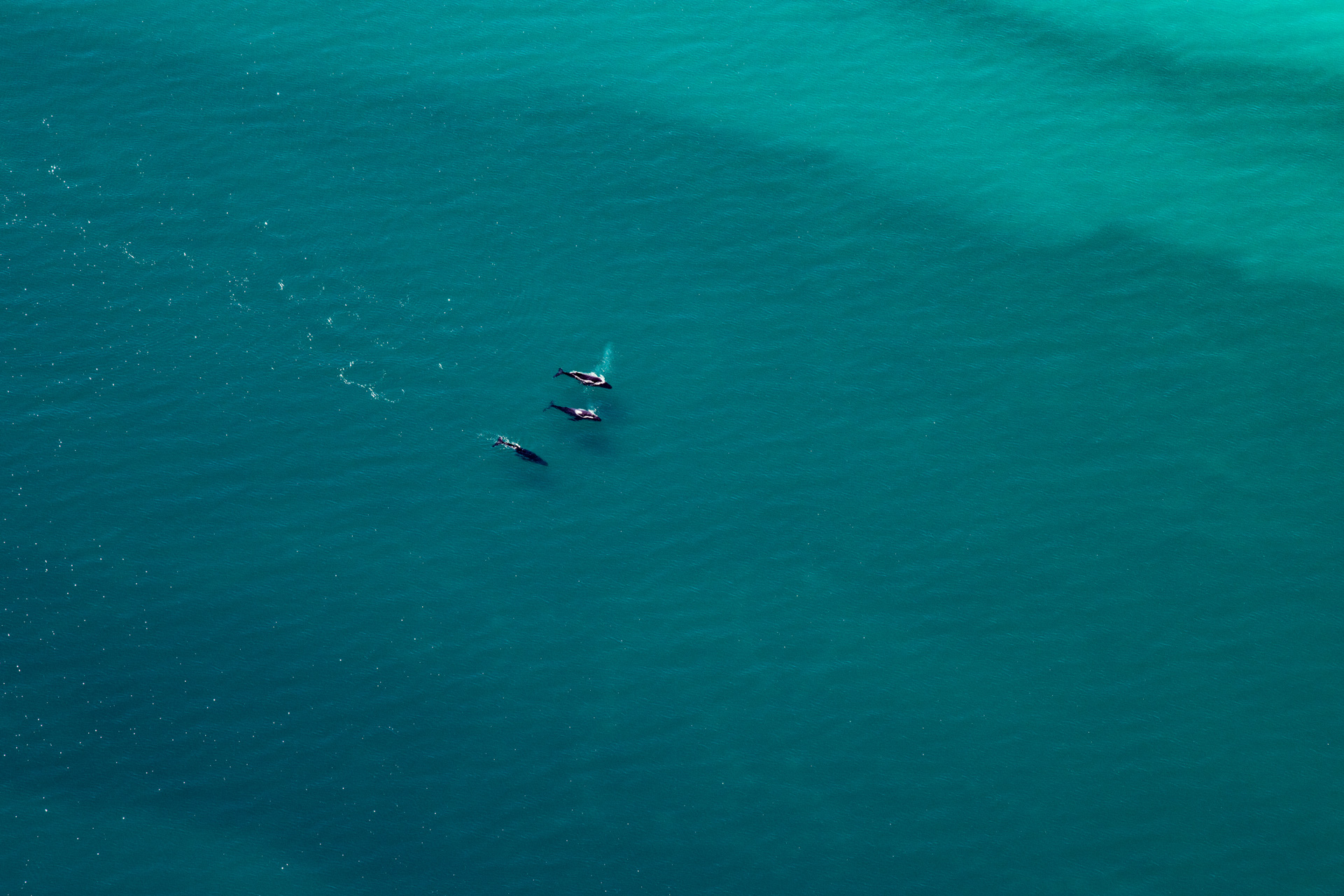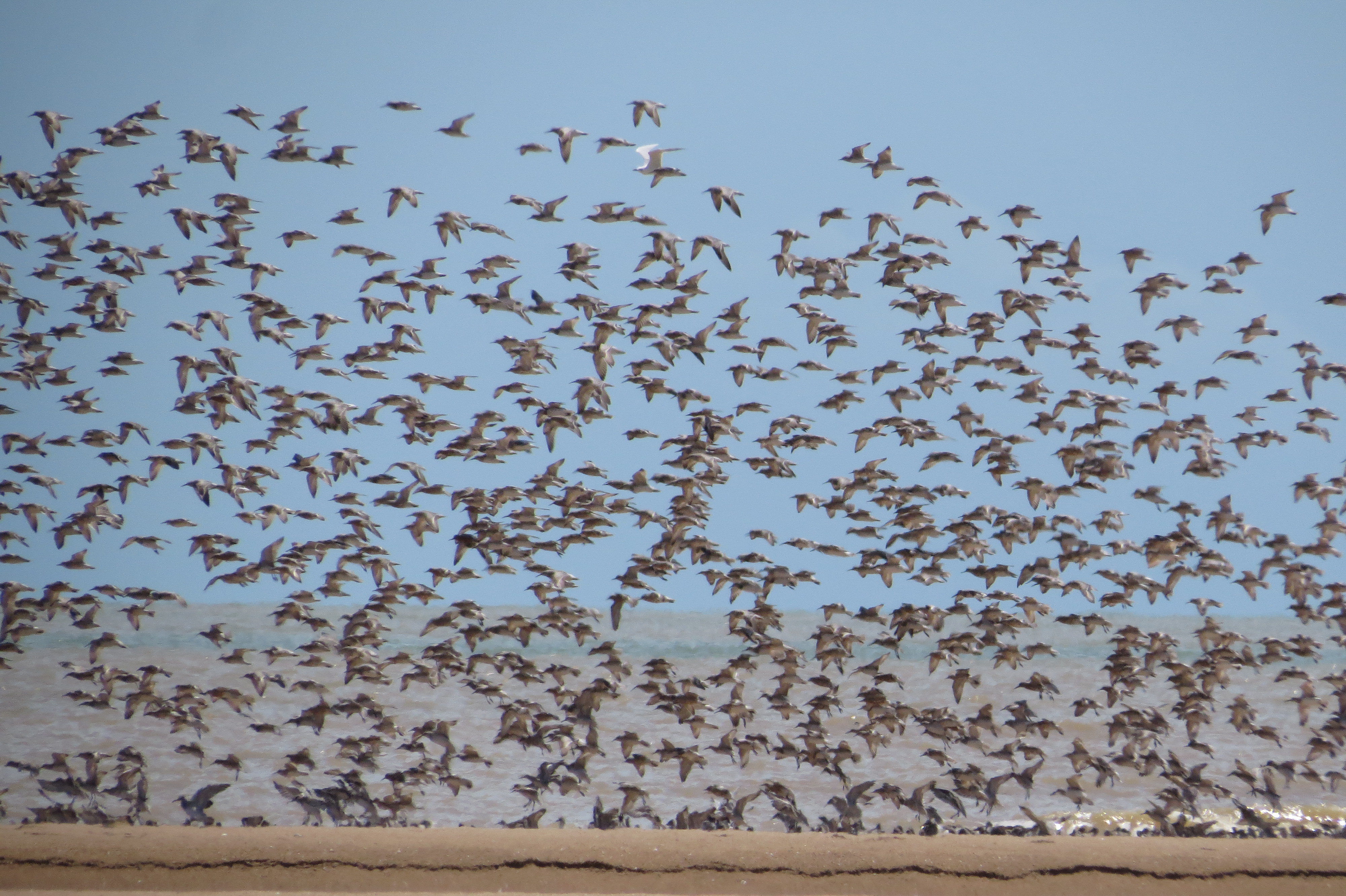|
|
MigrationIn ecology, migration is the focused movement of individuals, often as a whole population (i.e. mass migration) at a scale that is larger than their normal activity[2]. Animals undertake migrations for a number of reasons and migration factors can involve multiple distances, species, timing and causes. Migratory species have either a physiological or behavioural response to a temporal (seasonal) or spatial (geographic) variation in resources to fulfill part of a life history[2]. For many animals migration is linked to breeding and/or feeding and many also return to their original area (i.e. philopatry). A movement with no return but with similar outcomes is often referred to as dispersal. Movement is also related to aggregation and congregation. Quick facts
When the migration of a species is consistent and predictable this is referred to as obligatory migration[2]. This includes seasonal mass, long distance movement between feeding and breeding grounds undertaken by birds and whales. Most of these species return to the same areas year after year. Facultative migration is the irregular movement of biota, often in response to conditions or resources[2]. For example, some individuals of a species may not migrate one year because there are adequate resources for breeding, but the next year they may migrate to another area. Facultative migration is not as predictable and may not involve all individuals, with some individuals not moving and those that do move starting at variable times. Wetland dependant animals that migrate include those that travel over large transcontinental distances like migratory waterbirds, whales and turtles, or those moving smaller distances in and out with the tide, or up and down through the water column in diurnal migration (plankton)[1]. Many of the larger wetland species that migrate across several countries are recognised under international agreements and conventions that are incorporated into Australia’s federal and state legislation protection measures. Many shorebirds in Australia migrate every year to breed in Arctic, sub-Arctic and other far northern wetlands of Asia and Alaska where food resources are abundant and nest sites plentiful during the northern summers[4].Other waterbirds undertake more irregular movements within Australia to suitable wetland habitat, when conditions are favourable, such as large migration of Pelicans to Currawinya Lakes to breed during major flooding events in the Paroo catchment. Biota living in the water column (pelagic), or close to the sea floor (demersal) can often have migratory life phases including migrations between freshwater and saltwater[6]. Migration is part of the lifecycle of many fish species so they can access spawning grounds or follow rich feeding habitats (see Aquatic Fauna Passage). Adult freshwater eels (Anguilla sp.) migrate thousands of kilometres from upstream freshwater wetlands to tropical marine waters to spawn[5]. Once spawning has occurred the adult eels die, and eel larvae (a leptocephalus) start travelling back towards the coast. During their travel in marine areas larvae transform into glass eels (eel form but translucent) and then again into brown elvers when they move into freshwaters and travel upstream to start their adult life[5]. Migration triggers for estuarine and marine species include daylength (light), tides, currents, freshwater inputs and water temperature. Changes in ocean temperatures and current circulation patterns due to climate change, including the warming and speeding up of the East Australian Current, are redistributing estuarine and marine species that live in the water column or have pelagic lifecycle phases[3]. Links and References
References
Last updated: 23 October 2023 This page should be cited as: Department of Environment, Science and Innovation, Queensland (2023) Migration, WetlandInfo website, accessed 8 May 2025. Available at: https://wetlandinfo.des.qld.gov.au/wetlands/ecology/processes-systems/migration/ |

 — Department of the Environment, Tourism, Science and Innovation
— Department of the Environment, Tourism, Science and Innovation



